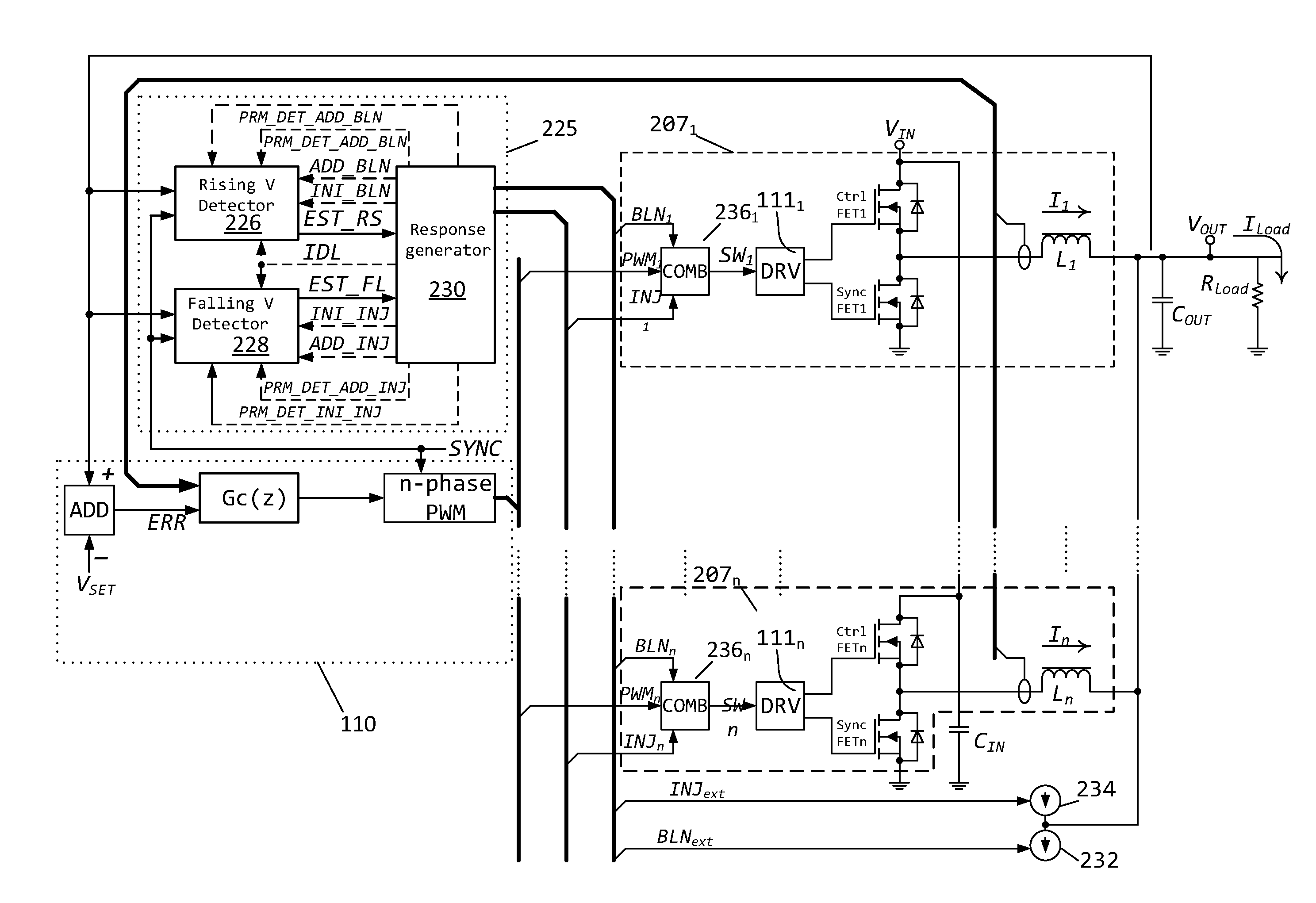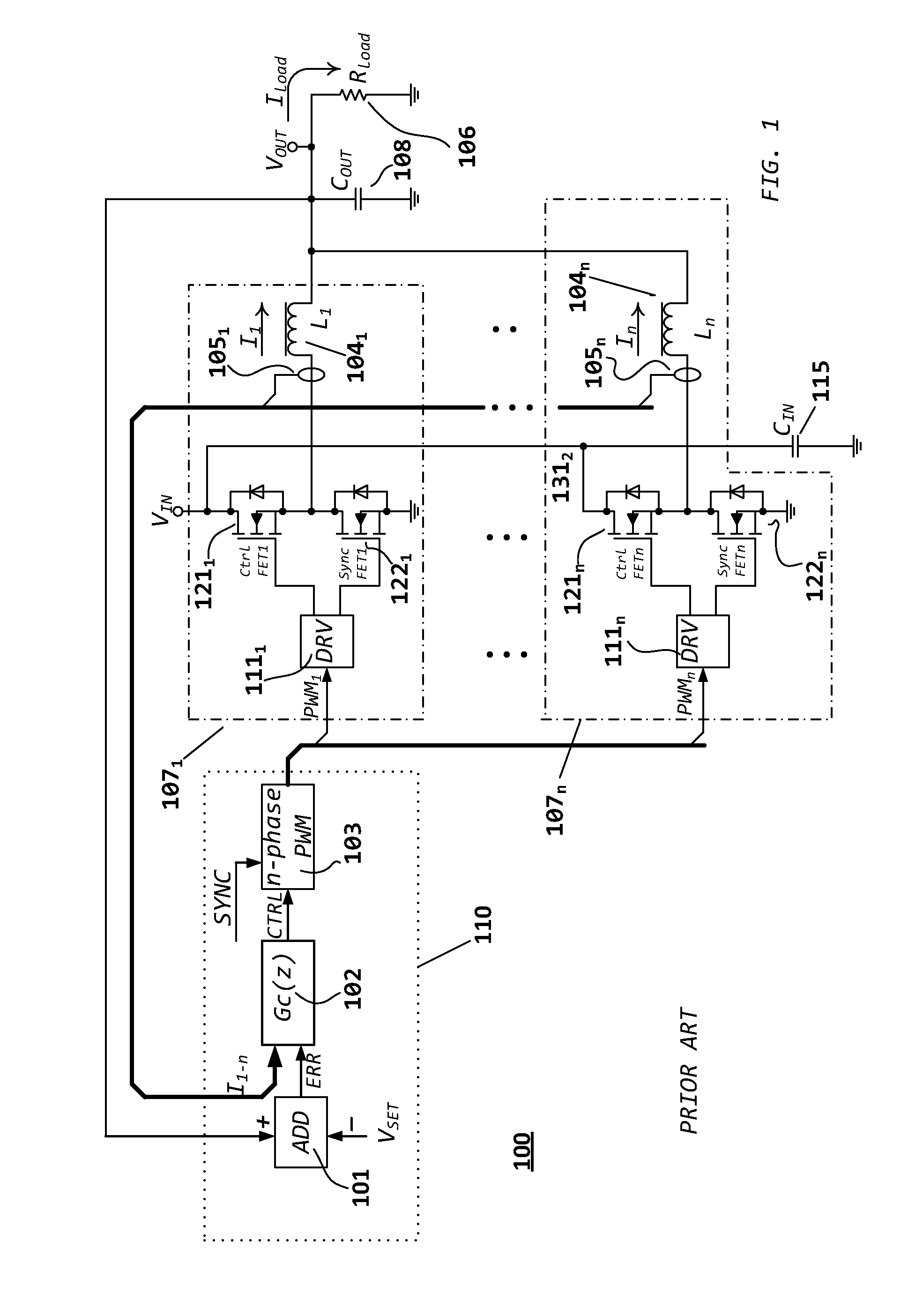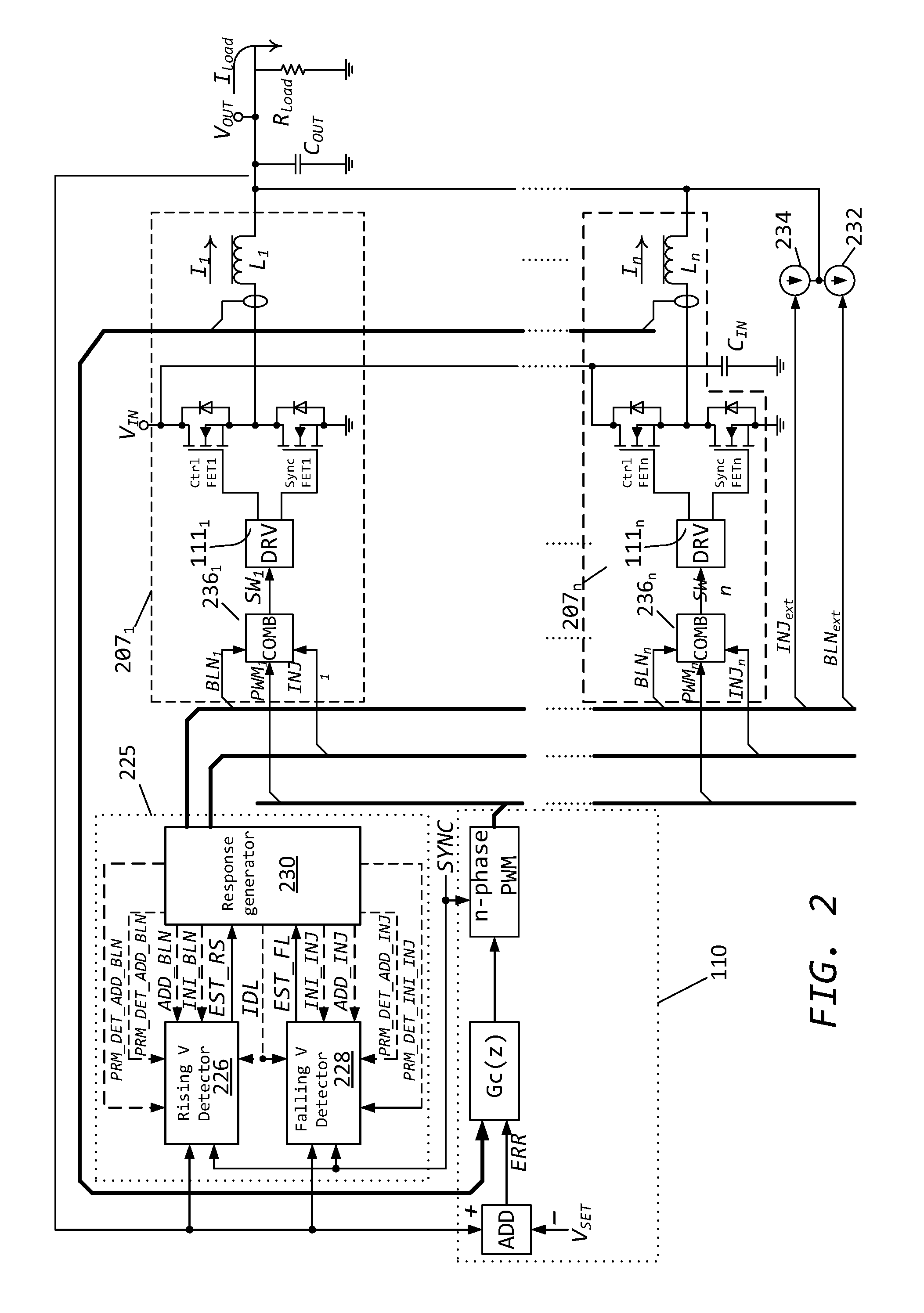Method for controlling a dc-to-dc converter
a technology of dc-to-dc converter and control method, which is applied in the direction of dc-dc conversion, power conversion system, instruments, etc., can solve the problems of reducing the efficiency of the converter to an unacceptable level, complicating the design of the converter, and often requiring a trade-off between stability and control system, so as to reduce the active time of pulses and reduce output voltage
- Summary
- Abstract
- Description
- Claims
- Application Information
AI Technical Summary
Benefits of technology
Problems solved by technology
Method used
Image
Examples
second embodiment
[0147]This second embodiment of the slew rate detector 460 provides capability for generating corresponding threshold waveforms for the steady state operation of the power converter and for the different intervals of a transient response sequence. This capability allows robust detection of the output voltage slewing, accurate run time adjustment of the duration of the initial pulse and modification of the succession of the follow-up constant-on-time pulses.
[0148]FIG. 5 is a block diagram that depicts an example embodiment 560 of the slew rate detector which processes output voltage VOUT at its “voltage” input and provides raw estimates of the slew rate at its output. This embodiment of the slew rate detector has the improved transient detection performance by having the capability for the runtime adjustment of the thresholds for the steady state ripple. This allows for adjustment over time to account for example to changes in operating conditions, e.g. temperature or ageing of compo...
first embodiment
[0179]The selector of the blanking sequence parameters 883 and selector of the injection sequence parameters 882 suitably have similar structures and will now be explained with reference to a first embodiment for a sequence parameter selector as shown in FIG. 9
[0180]The sequence parameter detector detects the start of the transient on the output voltage VOUT on the basis of the joint processing of the succession of raw estimations of the slew rate from the rising voltage detector 226 and falling voltage detector 228. If a transient is detected, then the selector of the sequence parameters provides at its outputs initial parameters of the transient mitigation response and thresholds for the rising voltage detector 226 and falling voltage detector 228 (as employed in FIG. 4, 5) for different intervals of the transient mitigation response.
[0181]The sequence parameter detector accepts as an input an m+1 bit binary word, which represents raw estimation of the slew rate. This input is app...
PUM
 Login to View More
Login to View More Abstract
Description
Claims
Application Information
 Login to View More
Login to View More - R&D
- Intellectual Property
- Life Sciences
- Materials
- Tech Scout
- Unparalleled Data Quality
- Higher Quality Content
- 60% Fewer Hallucinations
Browse by: Latest US Patents, China's latest patents, Technical Efficacy Thesaurus, Application Domain, Technology Topic, Popular Technical Reports.
© 2025 PatSnap. All rights reserved.Legal|Privacy policy|Modern Slavery Act Transparency Statement|Sitemap|About US| Contact US: help@patsnap.com



